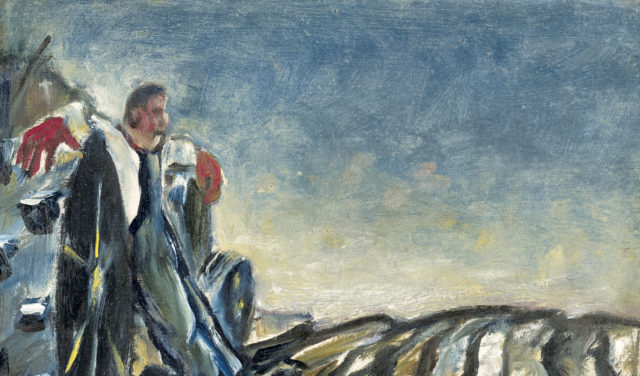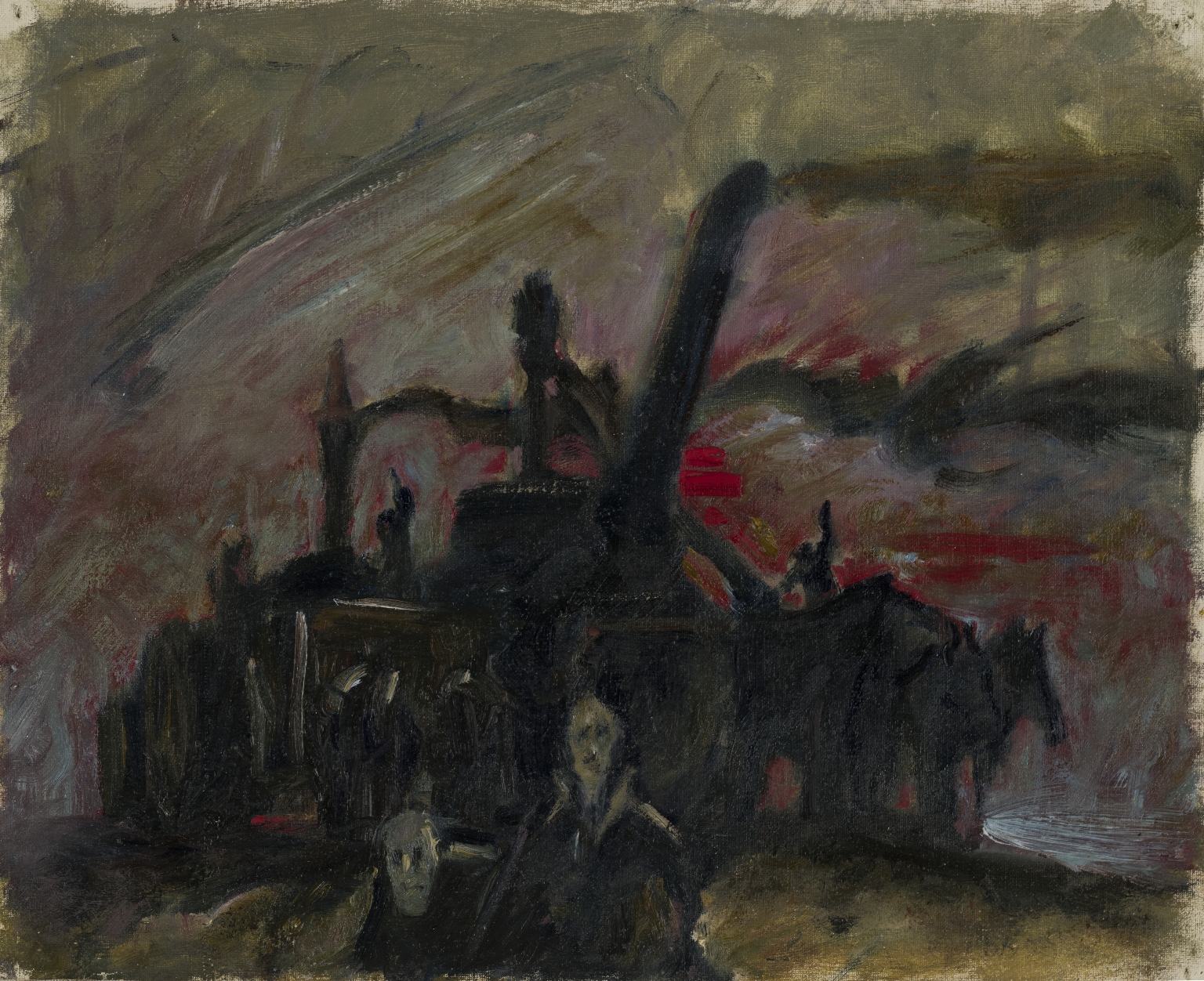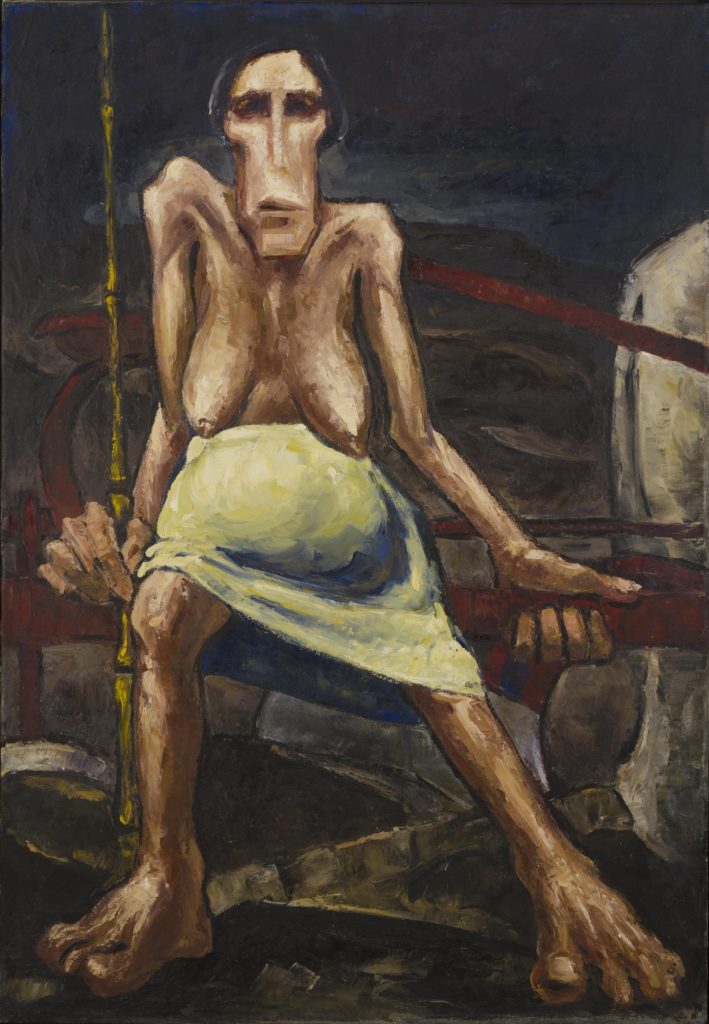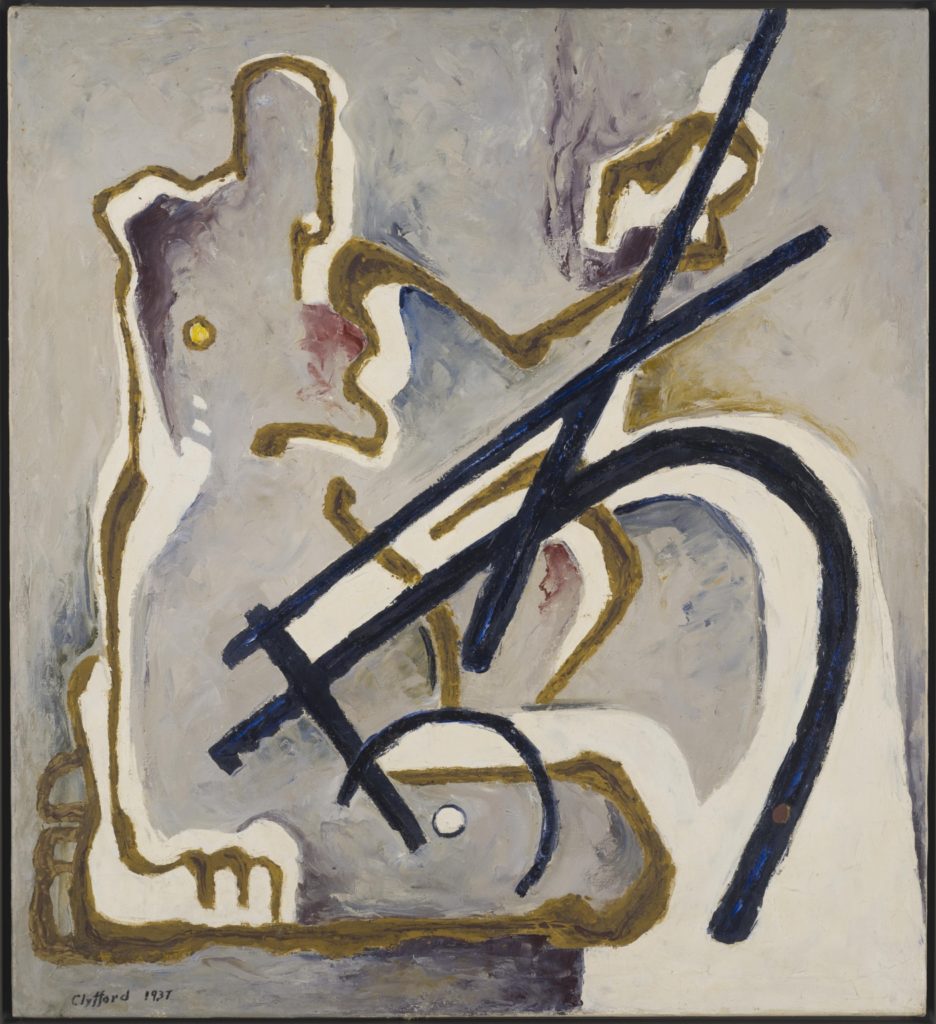
Sometime in late July 1934, a 29-year-old Clyfford Still packed his car with a few art supplies — rolls of green window shade in tow as frugal canvases — and drove from Washington State College (now university) to Saratoga Springs, New York, where he would spend the next month at an artists’ retreat known as Yaddo.
A graduate student at the time, Still was as yet unknown to the art world — or to the world in general, really. But Still’s passion for painting, his raw and boundless talent, was a force so undeniable that this unknown artist with humble roots in the drought-stricken, destitute homesteads of early 20th-century North Dakota found himself among the crème de la crème of the American creative set at Yaddo.
“There are 25 artists here but only five of us are painters,” Still wrote to his college president, Ernest Holland, two weeks after arriving at Yaddo. “The remainder are composers, writers and sculptors. A most brilliant company. I seem to be the only member who hasn’t a national reputation. You can well imagine my elation at the trust that has been placed in me. You will see at Yaddo 700 acres [sic] of magnificent woods, lovely lakes, cascades, terraces, rose gardens and fountains. All, however, dominated by a great and beautiful mansion where we are cared for like princes.”

At Yaddo, Still, and every other guest, was provided a private bedroom and studio where they could work without interruption between 9 a.m. and 4 p.m. daily. There were no studio visits permitted outside of visiting hours, and no visitors were permitted to stay overnight. Breakfasts and dinners were communal, and impromptu performances by other guests (composers the likes of Aaron Copland and Leonard Bernstein spent summers at Yaddo) were common.
So it’s no surprise that it was at this magnificent home in upstate New York — while the Depression sent families to the soup line, winds blew the very earth out from under farmers in the Great Plains and fascism threatened the great American experiment — where Clyfford Still found the path that would lead him to his destiny as a forefather of abstract expressionism. It was at Yaddo where Still, for the first time, was free to simply “dream, think and paint.”
The artist who would later remove himself from the art world was far from reclusive at any point in his life; he made friends at Yaddo who helped him, indirectly, shift his artistic focus away from straightforward depictions of everyday Western American life to the haunting, immersive works of abstraction that now define his career.
In an exhibition curated by Washington State University professor emerita Patricia Failing, the Clyfford Still Museum is now showing the 19 oil sketches Still created during his two summer stays at Yaddo in 1934 and ’35 in an exhibit called A Light of His Own: Clyfford Still at Yaddo. Still considered these years “among the very important moments in the development of my life’s works … the beginning of moving away from painting as reacting to what one sees from outside to [a] concept of painting as inner comprehension.”

As evidenced by Denver’s museum dedicated to the man’s work, Still stipulated in his will that his enormous archive of work remain complete — a mandate not out of arrogance but of conviction. He believed that was the only way to truly see an artist’s vision and progression. Failing, who has curated two shows at the Clyfford Still Museum, says this is evident in Still’s Yaddo works.
“One thing that’s very fortuitous about this particular exhibition is you get to see all the Yaddo paintings at once in kind of ideal conditions,” she says. “You can really appreciate them formally even though they are basically little oil sketches.”
And while the lion’s share of the 19 works in the Yaddo collection are “little oil sketches,” most of them in the 10-by-10-inches range, there are some larger bread crumbs that led to Still’s later preoccupation with massive works of abstraction.
“I think as he moves into more abstract compositions, [the paintings] are more engaging on different kinds of levels,” Failing says. “He’s moving through a sort of sign system, from kind of symbols to iconic signs and then on to an approach to painting as a kind of visual metaphor. I think it’s very consistent with the way he envisioned his own practice and development. You have to see the sweep of things to understand how the process worked out for him conceptually and formally.”
The Yaddo works were the first where Still made figures the focus of his work instead of landscape. Though the figures still represented the America that Still knew deeply — he grew up on a family wheat farm in Alberta, Canada — they were represented in a way that spoke to the greater human condition.

In PH-644 (Still never titled his works), an exhausted farmer with bloodied hands drapes himself over a tractor in a kind of Dust Bowl crucifix. Other bloodied farm hands appear, often against dramatic skies of black and red. in PH-953, a threshing machine seems to be stalking a farmer and his help, flecks of red outlining parts of the machine as though it has already tasted blood.

Still was clearly influenced by more than just his rural upbringing. While a student at Washington State College, he read works by Arthur Schopenhauer and Friedrich Nietzsche. In works like PH-414, Still seems to comment on Schopenhauer’s argument (drawn originally from Aristotle) that women exist solely for the propagation of the species and are “deformities, but ones which occur in the ordinary course of nature.” Still’s painting depicts a man and a woman standing with stalks of wheat. The man is emaciated but has enlarged genitals, while the woman is stunted, deformed, her breasts reaching toward her navel.
Unlike artists such as Edvard Munch, who used his art to paint women’s lives as restricted to sex, procreation and death — creatures who lived solely to distract men from work and greater pursuits — Still’s depiction of the procreative drive presents women as tragic figures, stuck with their male counterparts in an endless cycle of growth, death and rebirth.
In the years immediately following his summers at Yaddo, Still’s work began to take on the abstract aesthetic, with human figures becoming little more than mere suggestions (what he called the “lifeline,” a simple vertical line, would become a motif in many of Still’s works) married with tools and machinery. PH-342 (one of those larger bread crumbs) combines a tractor harrow with an abstract human figure.

A Light of His Own gives viewers a chance to explore the man behind the paintings. He made connections with fellow Yaddo guests, and even with some of their friends and family members, which carried on well past his time at the artists’ colony. While there he hobknobbed with composers Dante Fiorillo and Roy Harris and novelist James T. Ferrel, whom Still called “friends Yaddo has given me to paint for.” Martha Gruening, a lawyer, journalist, literary critic and associate of W.E.B. Du Bois, introduced Still to her sister, Clara Stillman, also a literary critic and a first-wave feminist; Stillman and Still corresponded for more than a decade.
While Still’s self-imposed exclusion from the art world is the most talked-about piece of his story, it’s his time at Yaddo, immersed with artists of all disciplines, which paved the way for the introspective, nonfigurative art that defines Clyfford Still. It is, without question, remarkable to move through the museum and see the point at which Still found his stride.
On the Bill: A Light of His Own: Clyfford Still at Yaddo. Clyfford Still Museum, 1250 Bannock St., Denver. Through Sept. 9.














